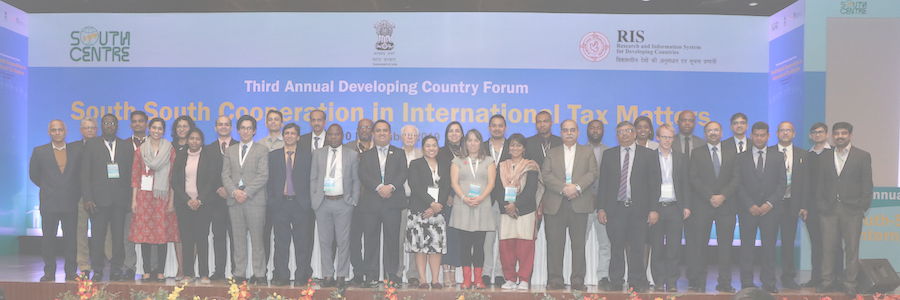Free Trade: A change of paradigm
The United States, champion of the free trade paradigm, is itself now criticizing it, with President Trump taking the country on a protectionist road.
This article, by a prominent Peruvian economist, points out the flaws of the orthodox paradigm which has caused difficulties for developing countries; and the change in the US policy may bring more problems.
By Humberto Campodonico
One of the pillars of orthodox economic theory explains that trade liberalization and tariff reductions benefits all countries, rich or poor. This was the theoretical matrix of the Bretton Woods Agreements in 1944, which designed the “international economic and trade order” for the next 70 years.
This matrix has just suffered a traumatic blow by Donald Trump. The slogan “America first” means that this is achieved at the expense of others, and not in partnership with them. Therefore, he proposes a tariff of 45% for Chinese products and 35% for Mexicans.
The magnitude of this rise is enormous. The WTO says that the weighted US tariff average in 2015 was only 1.69%. So we’re talking about raising it 18 to 25 times. Incredible.
Why does he do this? Because he says that free trade has not brought benefits to the US. And that NAFTA (the US Free Trade Agreement with Mexico and Canada) has caused the loss of millions of jobs in the US. And that the same would happen with Obama´s TPP (that Trump has rejected).
Bernie Sanders said the same thing: free trade brings losers and winners (although his economic and trade policies alternatives are far away from those of Trump). It’s not like what David Ricardo told us in the 19th Century: that everyone wins with free trade and therefore each country must specialize in its comparative advantages, according to the endowment of factors that it possesses (natural resources, capital, labor force).
If each country does that, Ricardo says, it will have a specific place in the international division of labor. If you do it as a supplier of raw materials or a producer of capital goods, it does not matter. In the end, everyone will win because international prices of goods will match and the same will happen with the prices of capital and labor.
One moment. That’s what the orthodox theory says. But reality tells us something different. In Peru, for example, we also have winners and losers, as in every country. For example, non-traditional exporters of agricultural products, including grapes, potas and squids, maca, strawberries and, recently, blueberries, are clearly the winners in trade with China. And also winners are those who buy cheaper consumer goods (from cell phones to motorcycles) as well as capital goods for the industry.
Among the losers we have the footwear industries (medium and small enterprises), as well as the textile industries (that is the case of the Gamarra textile cluster in Lima) since cheaper imports from third countries (mainly China) have strongly affected local production.
But the orthodox theory is not the only one that exists. There are other economic theories that point to orthodox failures. Recently, economist Dani Rodrik has clearly demonstrated that Ricardian theory is oversold. He adds, against all orthodoxy, that there are cases where “less trade may be better than more trade” (1).
The Economic Commission for Latin America and the Caribbean of the United Nations (ECLAC) tells us that “in recent years, greater integration in trade and global financial and investment flows has been associated with the weakening of redistributive systems, especially in several advanced countries” (2).
ECLAC adds that when they analyzed the world distribution of income, a paradox arose: in the last three decades, global inequality declined, while the internal inequality of most countries increased, especially in the industrialized countries. Let’s look at this more closely.
Global inequality declined especially in the “emerging countries”, such as China, India and, also, in Latin America. But in the OECD countries, the ratio of income share of the richest 10% of the population to that of the poorest 10% has steadily increased over the last four decades, from 7 in the eighties to 9.6 in 2014 (ECLAC, p.75).
This aggravation is explained by the replacement of manufacturing workers from rich countries by workers in the same sector in developing countries. Between 2000 and 2010, in the US and Europe almost 10 million manufacturing jobs were lost, more than a quarter of the total. In the same period, China created more than 45 million jobs in this sector, while Latin America generated 4 million (ECLAC, p.76).
Interesting, right? Someone would say: at last, rich countries are receiving their own medicine. With free trade in a global economy rich countries lose and emerging countries win. It doesn´t matter if the orthodox theory is wrong, as long as the outcomes are in my favor.
That’s what Trump is going to try to change, in order, he says, to aid American workers to get back their jobs. We do not believe that he will succeed despite his rhetoric: the announcement of lowering the income tax from 30 to 15% will further concentrate wealth in the richest 1% of the population.
Not only that. According to Paul Krugman, the underlying central characteristics of his economic and trade policies are more “effectist” than anything else because the real problem of the US economy is that productivity growth is not creating more jobs in the manufacturing sector due to several factors, including the boom of the service sector and the increasing automation (the use of robots). Therefore, the root of the problem is not that jobs have gone to other countries. Trump is wrong (3).
Let’s go back to Latin America. ECLAC says that the increase in fiscal resources due to the super-cycle of commodity prices generated greater employment and a positive cycle of redistributive policies that “marked a break with the past and that probably improved the population’s perception of the globalization process”.
But now that we have the “thin cows” period, that boom is over and will lead to an increase in social and political tensions. In addition, the Region, including Peru, did not take advantage of this super cycle to transform its production matrix towards greater value added and, thus, continues to depend on raw materials exports.
And we are in diapers in the economy of the future, which is increasingly based on the revolution of the digital economy (Internet economy). That is what Asian countries did, starting with China, because they did not believe the Ricardian tale of specialization according to our static comparative advantages. But in Latin America we have stumbled again on the same stone.
Corollary: We are facing a huge paradigm shift that no longer supports the free trade theses of 200 years ago nor the Bretton Woods agreements of 1944. That is the crux of the matter.
(1) Dani Rodrik, The Globalization Paradox, 2011.
http://www.rci.rutgers.edu/~triner/UFFseminar/RodrikParadox.pdf
See Chapter 3: Why doesn´t everyone get the case for free trade?
(2) CEPAL, Panorama de la inserción internacional de América Latina y el Caribe, 2015.
http://repositorio.cepal.org/bitstream/handle/11362/39010/4/S1501143_es.pdf
Humberto Campodonico is Senior Research Associate of the South Centre and Principal Professor at the Economics Faculty of Universidad de San Marcos, Lima.
This article was published in La Republica, Lima, Peru, 16 January 2017.












